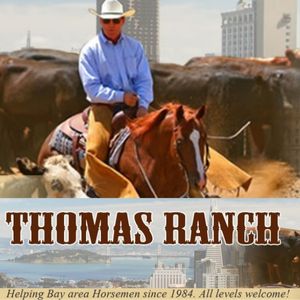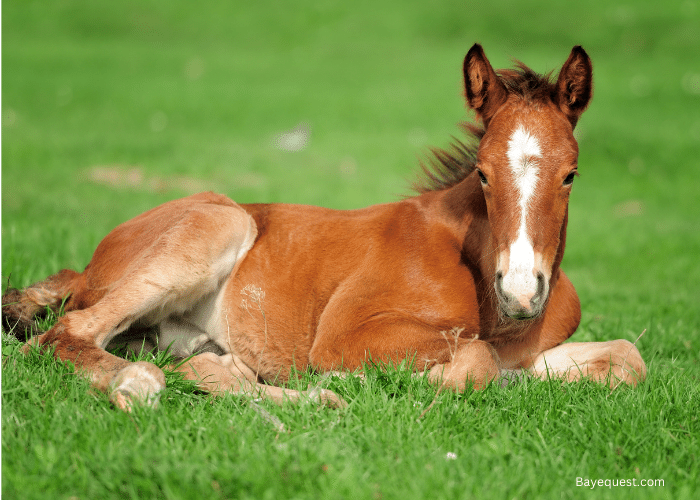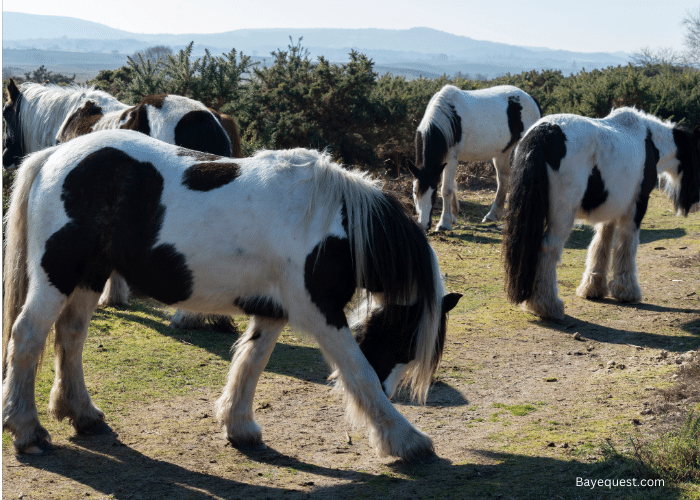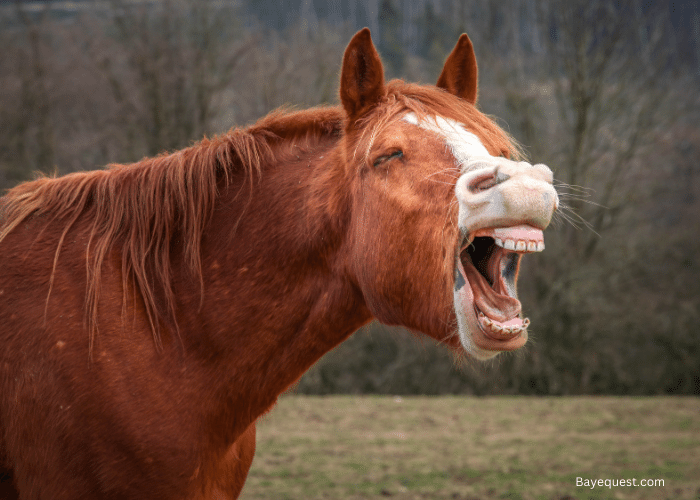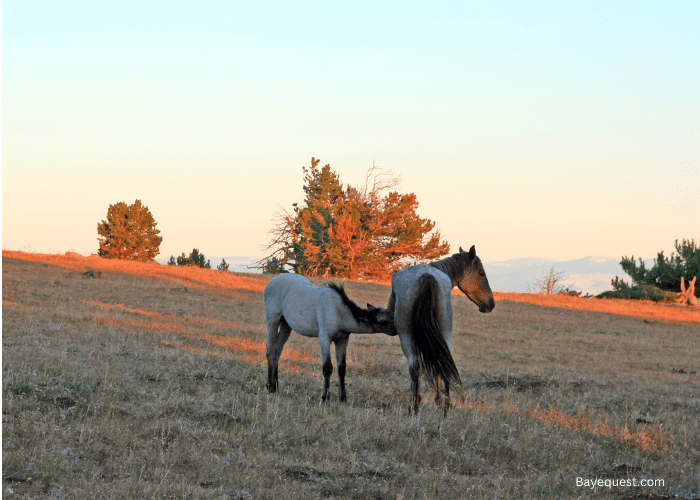Welcome to the world of colts, where every day is a step towards greatness. What exactly is a colt?
In this blog, we’ll explore their journey from wobbly-legged newborns to confident young stallions. We’ll also look at their growth, the basics of their care, and the training that prepares them for a bright future.
Whether you’re a seasoned equestrian or just a horse lover, there’s something magical about watching a colt grow up. Join us as we discover the fascinating early life of these incredible animals.
What is a Colt Horse?
A colt is a young male horse, usually under the age of four. Before they turn into strong and majestic stallions, colts spend their early years learning the ropes of being a horse.
They’re playful, curious, and a lot like kids in many ways. If you’re ever around a colt, you’ll see just how energetic and full of life they can be.
Common Usages of the Term Colt
The term “colt” is primarily used to refer to young male horses, typically under four years old. However, its usage can vary slightly in different contexts:
Horse racing. In the world of thoroughbred racing, “colt” describes a male horse from the time of its birth until it turns five years old, after which it is referred to as a stallion or, if castrated, a gelding.
General equestrian. In the equestrian world, a colt is any young male horse. In some circles, the term might be used to refer to young horses of either sex, though the correct term for young females is “filly.”
Breeding. In breeding terminology, knowing whether a horse is a colt or not is essential for pedigree and breeding purposes.
Informal usage. In older or more rural contexts, “colt” might describe any young, spirited horse, regardless of its exact age or sex.
Characteristics of Colts
Colts are known for their playful and energetic nature. These young horses are often full of life and curious about everything around them.
They’re in a phase where they’re growing quickly, both in size and strength, so they need plenty of good nutrition and care.
Like young athletes in training, the colts need to learn a lot. They start with basic training steps like getting used to a halter and leading, like the horse version of learning to follow the rules.
Their personalities start to show, too—some might be bold and adventurous, while others are a bit shy and need more encouragement.
You need to be patient and gentle with colts. This helps them trust and learn from the people around them as they prepare for more advanced training later.
Physical Development of a Colt
Birth to six months
Colts are able to stand and nurse within the first few hours after birth. Initially, they are quite wobbly but quickly gain coordination and strength.
Over the first six months, they grow rapidly, fueled by their mother’s milk and, gradually by introducing solid foods.
Six months to one year
During this phase, weaning occurs, and the colt starts to rely solely on solid food.
Physical growth continues swiftly, and the colt begins to look less like a foal and more like a miniature version of an adult horse.
One to four years
The colts keep growing in height and muscle mass. Most of their skeletal structure is in place by age two, although they continue to fill out and gain muscle.
Colts reach physical maturity around four years, though some breeds, especially larger ones, may continue maturing until they are six.
Behavioral Development of a Colt
Early life
Colts are playful and curious in the first few months, learning about their environment through exploration and play.
They start establishing social behaviors by interacting with their mother and other horses in a herd.
Post-Weaning
After weaning, colts may exhibit signs of stress or anxiety due to separation from their mothers. This is a critical time for socialization with humans and other horses.
Training should begin with simple commands to build trust and establish a foundation for future training.
Adolescence
As they approach one to two years old, colts can start to challenge their boundaries, much like human teenagers. Training during this time is crucial for establishing respect and understanding.
Colts will continue to learn from their experiences and the training they receive. This will influence their temperament and behavior as adults.
The Transition from Colt to Adult Horse
Transitioning from a colt to an adult horse is a gradual and significant process. It’s not just about growing bigger; it’s about maturing in body and mind.
Around the age of four, a colt is no longer called a colt; he becomes a young stallion or gelding if castrated. This is when the playful young horse starts to settle down a bit.
As they grow, their training becomes more focused. What started with simple tasks now evolves into more advanced training based on their future roles.
Physically, they fill out more, gaining muscle and strength. Their coats might change too, becoming a bit rougher, a sign of maturity.
Behaviorally, they become less impulsive, learning to manage their responses to their environment.
This transition is crucial. It’s when young horses start to show their potential and when the bond they have with their handlers can deepen.
Care and Management of Colts
Caring for colts is all about meeting their needs with patience and consistency. Here’s what’s essential:
Nutrition. Giving colts the right food is key so they grow strong and healthy. They start with their mother’s milk and gradually move to solid foods.
Training. Early training should be gentle. It’s about building trust and teaching basic skills like leading and responding to simple commands. Training gets more detailed as they grow, preparing them for saddles, bridles, and more complex commands.
Socialization. Colts need to be around other horses to learn how to behave in a herd. This is also when they start interacting more with people. Positive experiences during this time can really shape their personalities and how they handle stress or new situations.
Health care. Regular check-ups with a vet are crucial. Colts need vaccinations and routine health checks to prevent diseases. Also, taking care of their hooves and teeth from an early age prevents bigger issues later on.
Exercise. Colts are naturally energetic. They need plenty of space to run and play. This keeps them fit and helps them mentally, keeping them engaged and happy.
Terminologies Used to Describe Horses Depending on Their Age
When it comes to horses, specific terms are used to describe them based on their age, gender, and reproductive status. Here’s a quick guide to understanding these terms:
Foal. This term is used for a horse of either sex from the time of birth until it is weaned, generally around four to six months old.
Yearling. A horse of either sex that is between one and two years old. At this stage, they are past being a foal but not yet mature enough to be classified based on their reproductive capabilities or roles.
Colt. A male horse under the age of four. Colts are young and not yet used for breeding. After reaching four years old or when they start breeding, they are referred to as stallions unless castrated.
Filly. A female horse under the age of four. Like colts, fillies are young and are not used for breeding. Once they reach four years of age, they are called mares.
Mare. A mature female horse, usually over the age of four. Mares are fully grown and often used for riding, work, and breeding.
Stallion. A mature male horse that has not been castrated, typically over the age of four. Stallions are used for breeding and can also be used for work or riding.
Gelding. A castrated male horse of any age. Gelding makes male horses calmer and easier to handle.
Colts in Popular Culture
Colts have been featured in popular culture, often symbolizing youth, potential, and the journey of growth. Their appearances span literature, film, and sports, reflecting their significance and appeal.
Here’s a look at some of the ways Colts have been portrayed in popular culture:
Literature. Colts often appear in novels and stories about horses. Classic examples include works like “Black Beauty” by Anna Sewell, where young horses play pivotal roles in the narrative.
Film and television. Colts are frequently featured in movies and TV shows, especially in Westerns or stories set in rural environments. They are often depicted as being trained and growing into reliable companions. In “The Horse Whisperer,” a young horse’s recovery and training are the central themes.
Art and photography. Colts are a popular subject in equestrian art and photography, capturing their playful nature and elegant form. Their dynamic poses and youthful energy make them appealing subjects that convey motion and emotion.
Sports mascots. The term “Colts” is used as a mascot for sports teams, notably the Indianapolis Colts in the NFL. The choice of a colt as a mascot symbolizes youth, vigor, and the potential for growth and success.
Symbolism in stories and myths. In many cultures, colts symbolize vitality, renewal, and the untamed forces of nature. Their growth from youthful innocence to mature strength is a powerful metaphor for human development and potential.
Educational and documentary media. Documentaries about horses often focus on the development stages from colt to adult horse.
When Should I Geld my Colt?
Deciding when to geld a colt is an important choice that depends on a few things.
Usually, the best time to geld a colt is between six months and two years of age. At this young age, they recover quickly and handle the procedure well.
Plus, gelding them early can help avoid more challenging behaviors that stallions can develop, like aggression or dominance, making them easier to train and handle.
However, the timing should also consider the colt’s health, size, and development. It’s always a good idea to talk this over with your vet.
They can advise based on your colt’s specific needs and circumstances. This way, you can make sure the process is as smooth and safe as possible for your young horse.
What is Castration?
Castration is a medical procedure in which the testicles of a male animal, like a horse or a dog, are removed. This is often done to help manage the animal’s behavior, making it calmer and easier to handle.
It can also prevent unwanted breeding. The procedure is quite common and is generally safe when performed by a skilled veterinarian.
After castration, animals recover quickly, and owners often notice that their pets or livestock are more docile and focused.
Why Should I Castrate My Colt?
Castrating your colt can be a wise decision for several reasons.
First, it generally makes them easier to handle. Without the hormones that stallions have, they’re usually calmer and less likely to act aggressively. This can make training and handling smoother and safer for you and the horse.
Second, castrating a colt can prevent unwanted breeding. This is especially important if you don’t plan to breed your horse or keep him around other horses.
Lastly, geldings, castrated male horses, are often more focused. They’re less distracted by the presence of mares and more consistent in their behavior, which can be a big plus in training and competition.
So, castrating your colt can help manage his behavior, making him a more pleasant and safer companion.
Colt Vs Foal Vs Filly
A colt is a young male horse under the age of four years. Colts are known for their energy and as they grow, they begin to show the physical and behavioral traits of a stallion, especially if they are not castrated.
Castrating a colt turns him into a gelding, often making him calmer and easier to handle. Colts are often in training that prepares them for various roles, whether in riding, racing, or work.
A foal is a term used for a horse of any gender from the moment it’s born until it is weaned, around four to six months old. During this stage, foals depend on their mothers for nourishment and protection.
This term is neutral regarding the horse’s sex; it refers to their young age. Foals are characterized by their rapid growth and development during these initial months.
A filly is a young female horse under the age of four. Like colts, fillies undergo significant growth and training during their early years but are destined to become mares if they remain uncastrated.
Fillies can be just as spirited and energetic as colts. They also require careful training and socialization to prepare them for future roles.
FAQs
What is a group of colts called?
A group of colts is referred to as a “rag” or a “rag of colts.”
Can you ride a colt?
No. You should not ride a colt until they are matured and trained, which usually begins around the age of four to five years. Proper training ensures they are physically and mentally ready to carry a rider safely.
What’s the difference between a pony and a colt?
A pony is a breed of horse with a small stature, generally standing at less than 14.2 hands high at maturity. The term “pony” can refer to both male and female animals and is not limited by the animal’s age. A colt, on the other hand, specifically refers to a young male horse, typically under the age of four years. The term “colt” denotes the age and sex of the horse, rather than its breed or size.
Conclusion
It’s clear that these spirited young horses are more than just future champions. They are a fascinating blend of playfulness, potential, and promise.
From their first wobbly steps to their bold strides into adulthood, each colt has a story waiting to be told. Whether you’re a seasoned equestrian or a casual horse admirer, the life of a colt reminds us that growth is a beautiful process.
Keep watching these magnificent creatures; they have much to teach us about strength, resilience, and the pure joy of running free.



